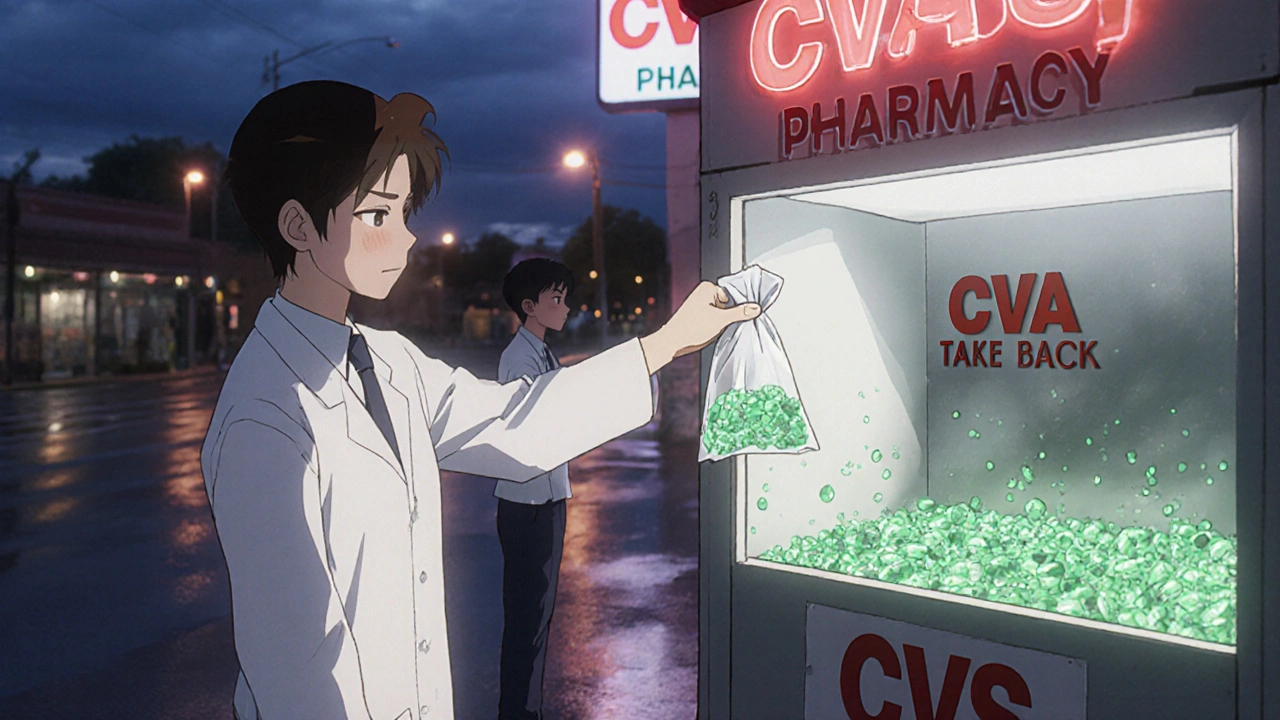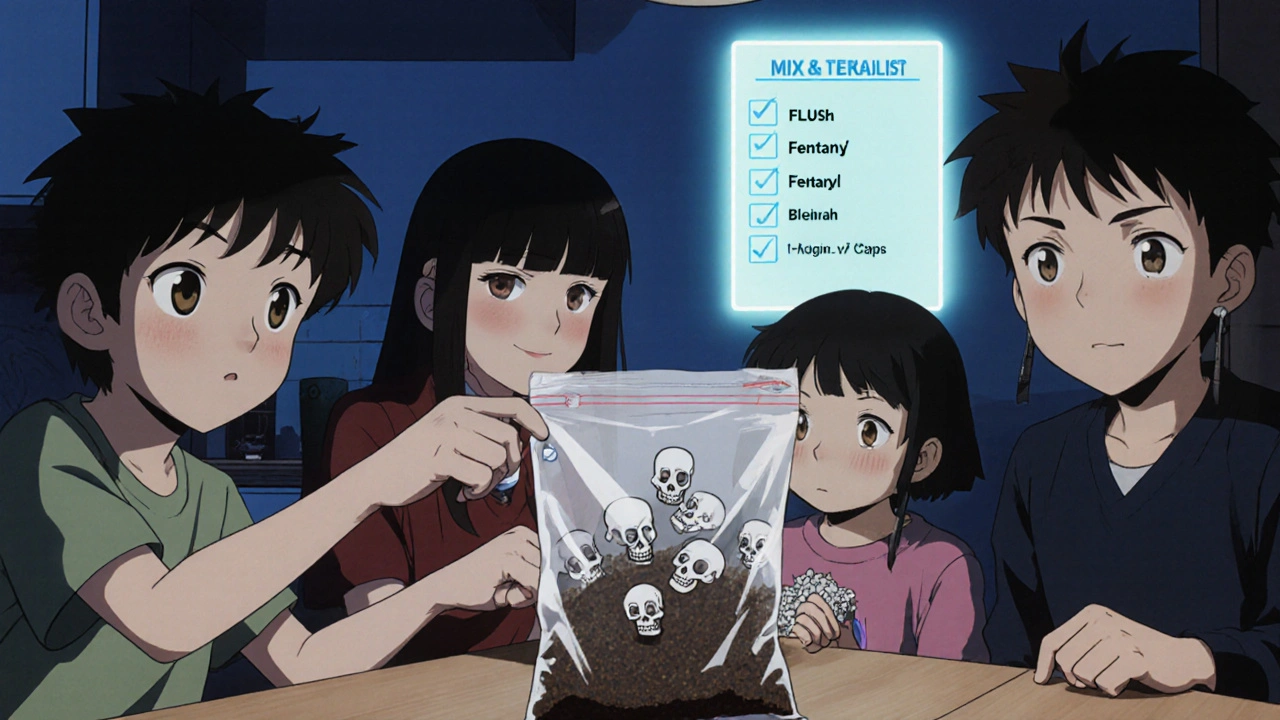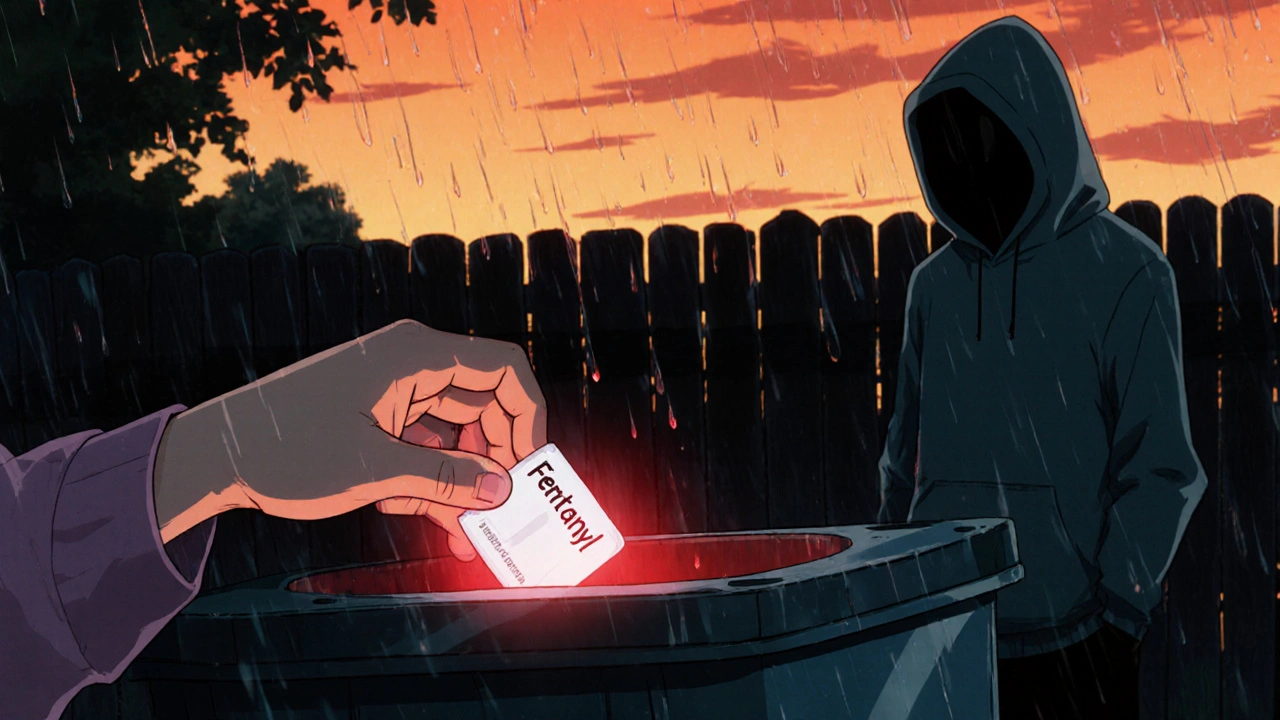Putting old pills in the trash might feel like the easiest way to get rid of them. But for some medications, that simple act could be deadly. A child digging through the bin, a teenager looking for a buzz, or even a well-meaning relative cleaning out a cabinet - all it takes is one pill from the wrong medicine to cause a fatal overdose. The medication disposal rules aren’t just suggestions. For certain drugs, the only safe way to get rid of them is to flush them down the toilet - yes, really.
Why Some Medications Can’t Go in the Trash
Not all expired or unused medicines are the same. Some are harmless if left in a drawer. Others? They’re lethal in a single dose. The U.S. Food and Drug Administration (FDA) has a specific list of medications that must never go in household trash. These are drugs with high abuse potential and extreme toxicity. Fentanyl, for example, is 50 to 100 times stronger than morphine. A single patch, if found by a child or someone unaware of its strength, can stop breathing in minutes. The FDA created the flush list in response to rising overdose deaths. In 2020 alone, over 91,000 people in the U.S. died from drug overdoses. Nearly 70% of those involved prescription opioids. Many of these drugs were obtained not from dealers, but from family medicine cabinets. A 2019 study by SAMHSA found that 53% of people who misused painkillers got them from friends or relatives - often because those pills were sitting in a trash can or bathroom cabinet.The FDA Flush List: What Can’t You Throw Away?
The FDA’s flush list isn’t long, but every item on it is dangerous if left accessible. Here’s the full list of medications that must be flushed immediately when no longer needed:- Any drug containing buprenorphine - including BELBUCA, SUBOXONE, SUBUTEX, ZUBSOLV
- Any drug containing fentanyl - including ABSTRAL, ACTIQ, DURAGESIC, FENTORA, ONSOLIS
- Hydromorphone - EXALGO
- Meperidine - DEMEROL
- Methadone - DOLOPHINE, METHADOSE
- Morphine - ARYMO ER, AVINZA, EMBEDA, KADIAN, MORPHABOND ER, MS CONTIN, ORAMORPH SR
- Oxymorphone - OPANA, OPANA ER
- Tapentadol - NUCYNTA, NUCYNTA ER
- Sodium oxybate - XYREM, XYWAV
- Diazepam rectal gel - DIASTAT, DIASTAT ACUDIAL
- Methylphenidate transdermal system - DAYTRANA
What About Environmental Harm? Isn’t Flushing Bad for the Water?
You’ve probably heard that flushing medicine pollutes rivers and drinking water. That’s true - but it’s not the whole story. Wastewater plants can’t remove all pharmaceuticals. Studies show that 30-90% of drug compounds pass through treatment and end up in lakes and streams. Some, like carbamazepine, barely get filtered at all. Fish have shown behavioral changes from exposure. Drinking water in some areas contains trace amounts of antidepressants and antibiotics. But here’s the trade-off: the EPA and FDA agree that for these specific drugs, the risk of death from accidental exposure outweighs the environmental risk. Dr. John Scott from the EPA’s National Homeland Security Research Center testified in 2022 that the environmental impact of flushing one fentanyl patch is negligible compared to the potential for multiple deaths if that same patch is found in a trash can. The FDA’s guidance is clear: Don’t flush your medicine unless it’s on the flush list. For everything else, trash disposal is still the recommended route - but only if done correctly.
How to Dispose of Medications That Aren’t on the Flush List
If your medication isn’t on the flush list, here’s the safe way to throw it away:- Take the pills or liquid out of their original bottles.
- Don’t crush tablets or capsules - that can make them dangerous to handle or release harmful dust.
- Mix them with something unappealing: used coffee grounds, cat litter, dirt, or even dirt from your garden.
- Put the mixture into a sealed plastic bag or container.
- Throw the sealed container in your regular household trash.
What About Take-Back Programs?
The best way to dispose of any medication - flush list or not - is through a drug take-back program. These are free, safe, and environmentally responsible. In the U.S., over 49 states have medication collection programs. Many pharmacies, police stations, and hospitals have drop-off boxes. Walgreens has over 2,000 disposal kiosks. CVS Health has added nearly 1,800 more. You can find the nearest location by visiting the DEA’s website or checking with your local pharmacy. But here’s the catch: only about 15% of people actually use these programs. Many don’t know they exist. Others think it’s too much trouble. But if you’re unsure whether to flush or trash, a take-back box is always the safest bet.
Real Consequences of Improper Disposal
This isn’t theoretical. In 2023, a Reddit post by a nurse named u/MedSafetyNurse shared a case where a toddler found a fentanyl patch in the trash. The child was rushed to the hospital and survived - but only after intensive care. The same year, the American Association of Poison Control Centers reported over 8,900 single-exposure cases involving fentanyl, with 42% of those involving children under five. In Montgomery County, Ohio, a teenager found unused oxymorphone (OPANA ER) in a neighbor’s trash. He died from a single dose. That tragedy led to new local laws requiring special disposal instructions for Schedule II drugs. These aren’t isolated cases. They’re preventable - if we follow the rules.What You Can Do Today
You don’t need to be a pharmacist to keep your household safe. Here’s what to do right now:- Check your medicine cabinet. Look for any of the drugs on the FDA flush list.
- If you find one, flush it immediately - don’t wait.
- For everything else, mix it with coffee grounds or cat litter, seal it, and toss it.
- Find a take-back location near you - even if you don’t have any flush-list drugs, it’s a good habit.
- Teach your family: kids, teens, and elderly relatives all need to know this.
What’s Changing in the Future?
The system is slowly improving. The Secure and Responsible Drug Disposal Act of 2010 requires drug manufacturers to fund take-back programs. Companies like DisposeRx now sell $1.50 powder packets that turn pills into gel when mixed with water - making them impossible to recover. These are already used in over 1,200 pharmacies. New packaging is also being tested. A 2023 pilot at the University of Florida used envelopes with activated charcoal to absorb medication if the bottle breaks. Results showed a 63% drop in improper disposal. Congress is also considering the SNIPED Act, which would require doctors to give disposal instructions with every prescription for strong painkillers. That could make a huge difference. But until then, the rules we have now are clear: flush what’s on the list. Mix and trash the rest. Use take-back when you can.Can I flush all expired medications down the toilet?
No. Only medications on the FDA’s flush list should be flushed. Flushing anything else can pollute water supplies. For all other drugs, mix them with coffee grounds or cat litter, seal them in a plastic bag, and throw them in the trash.
What if I can’t find a take-back program near me?
If no drop-off location is available, follow the FDA’s trash disposal method: remove pills from their original containers, mix them with an unappealing substance like used coffee grounds or cat litter, seal them in a plastic bag, and place them in your household trash. Never crush pills unless instructed.
Is it safe to flush fentanyl patches?
Yes. Fentanyl patches are on the FDA’s flush list because a single patch can be lethal to a child or someone without a prescription. Flushing ensures the patch is immediately destroyed. Waiting to dispose of it in the trash puts others at serious risk.
Why doesn’t the FDA just ban these drugs instead of asking people to flush them?
These drugs are essential for managing severe pain in patients with cancer, surgery recovery, or terminal illness. Banning them would deny relief to people who need them. The goal isn’t to stop the medicine - it’s to stop the misuse. Flushing ensures that when the medicine is no longer needed, it can’t be taken by someone else.
Can I just pour liquid medicine down the sink?
No. Pouring liquid medicine down the sink or toilet without mixing it first can contaminate water supplies. Even if it’s not on the flush list, you should mix liquid medication with coffee grounds or cat litter in a sealed container before throwing it in the trash. Only flush liquids if they’re on the FDA’s flush list and the label says to flush.
What should I do with old opioid prescriptions after my loved one passes away?
If the medication is on the FDA flush list - such as fentanyl, morphine, or oxymorphone - flush it immediately. For others, mix them with an unappealing substance and dispose of them in the trash. The safest option is to take them to a pharmacy drop-off box. Many pharmacies offer free disposal services for family members handling a deceased person’s medications.

Ross Ruprecht
November 22, 2025 AT 23:18Bryson Carroll
November 24, 2025 AT 17:20Lisa Lee
November 25, 2025 AT 10:30Jennifer Shannon
November 26, 2025 AT 11:09Suzan Wanjiru
November 26, 2025 AT 18:10Kezia Katherine Lewis
November 27, 2025 AT 10:25Henrik Stacke
November 28, 2025 AT 09:24Manjistha Roy
November 30, 2025 AT 08:23Jennifer Skolney
December 1, 2025 AT 20:10JD Mette
December 2, 2025 AT 17:56Olanrewaju Jeph
December 3, 2025 AT 22:46Dalton Adams
December 5, 2025 AT 11:02